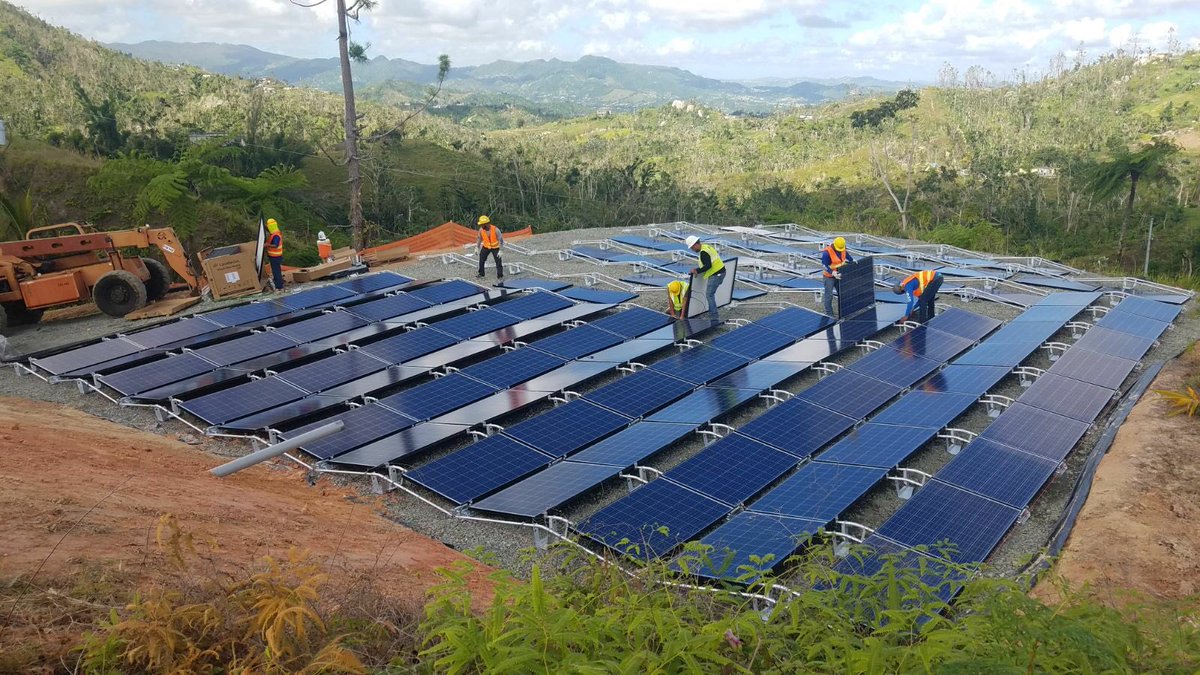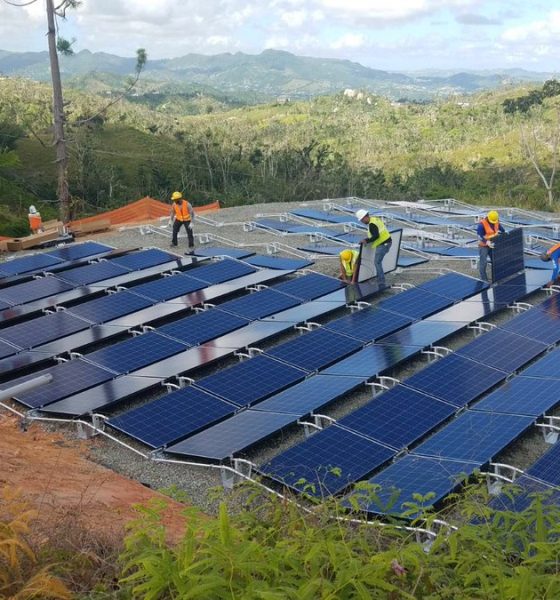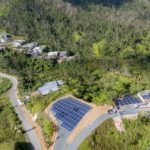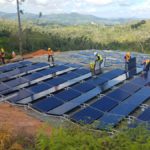

Energy
Elon Musk pushes more Tesla battery installs as blackout hits Puerto Rico
Amid Puerto Rico’s recent islandwide blackout, Elon Musk stated that the Tesla team would be working to expand its existing battery and solar installations 24/7 to support the country’s damaged power grid better.
In an announcement on Wednesday, Puerto Rico’s Electric Power Authority stated that the whole island is without electricity and that it would likely take around 24 to 36 hrs before power is restored. Puerto Rico power officials further noted that they are prioritizing the restoration of electricity in key locations first, such as hospitals and banking centers. The recent islandwide blackout came not long after another power outage affected around 840,000 residents last week.
Responding to the news on Twitter, Musk stated that Tesla batteries have gone live and are delivering power to 662 locations in Puerto Rico. According to Musk, the Tesla team is working around the clock to activate “several hundred” more.
Tesla batteries are currently live & delivering power at 662 locations in Puerto Rico. Team is working 24/7 to activate several hundred more. https://t.co/OMu8qKJvLy
— Elon Musk (@elonmusk) April 18, 2018
Not long after the billionaire entrepreneur’s Twitter announcement, Tesla’s official Twitter account shared photos of the company’s solar installations in the island as well, stating that there are currently over 1,000 Tesla batteries that have been activated in 662 locations so far. Echoing Musk’s statement, the electric car and energy company noted that more projects are underway.
Puerto Rico has been dealing with a power crisis since being hit by Hurricane Maria almost 7 months ago. When the Category 4 hurricane made landfall, it devastated the country’s entire power grid, leaving its roughly 3.5 million residents without power. Amid the relief efforts to aid the country, Tesla began shipping some of its Powerwall 2 residential battery storage units and solar panels to help restore electricity to Puerto Rico’s residents. Musk also made a personal donation to the country worth $250,000.
- Tesla’s solar system in Puerto Rico. [Credit: Tesla]
- Tesla’s solar system in Puerto Rico. [Credit: Tesla]
Musk noted that its batteries could be used by the country to help support its damaged grid, considering that it had already done similar projects for “many smaller islands around the world” in the past. The Tesla CEO further stated that while there is no scalability limit when it comes to battery storage and solar solutions, the decision to pursue such a project would ultimately lie in the hands of the Puerto Rico government.
Puerto Rico Governor Ricardo Rossello expressed interest in Musk’s Twitter statement, suggesting that the island nation could become Tesla’s flagship energy project. Since then, Tesla has been hard at work installing its batteries and its photovoltaic systems to locations across the country; and if Musk’s recent announcement is any indication, more installations will likely happen soon.
As we noted in a previous report, if Tesla aims to supply 40% of the island’s energy through solar and battery solutions, the cost of the project would be substantial. Considering the rates of Tesla’s solar panels and battery packs, the cost of materials would roughly come at $9.58 billion. Factoring in an estimated 7% interest rate and Puerto Rico’s rather poor credit rating and high debt, the project could ultimately cost over $21 billion over 20 years.

Cybertruck
Tesla updates Cybertruck owners about key Powershare feature

Tesla is updating Cybertruck owners on its timeline of a massive feature that has yet to ship: Powershare with Powerwall.
Powershare is a bidirectional charging feature exclusive to Cybertruck, which allows the vehicle’s battery to act as a portable power source for homes, appliances, tools, other EVs, and more. It was announced in late 2023 as part of Tesla’s push into vehicle-to-everything energy sharing, and acting as a giant portable charger is the main advantage, as it can provide backup power during outages.
Cybertruck’s Powershare system supports both vehicle-to-load (V2L) and vehicle-to-home (V2H), making it flexible and well-rounded for a variety of applications.
However, even though the feature was promised with Cybertruck, it has yet to be shipped to vehicles. Tesla communicated with owners through email recently regarding Powershare with Powerwall, which essentially has the pickup act as an extended battery.
Powerwall discharge would be prioritized before tapping into the truck’s larger pack.
However, Tesla is still working on getting the feature out to owners, an email said:
“We’re writing to let you know that the Powershare with Powerwall feature is still in development and is now scheduled for release in mid-2026.
This new release date gives us additional time to design and test this feature, ensuring its ability to communicate and optimize energy sharing between your vehicle and many configurations and generations of Powerwall. We are also using this time to develop additional Powershare features that will help us continue to accelerate the world’s transition to sustainable energy.”
Owners have expressed some real disappointment in Tesla’s continuous delays in releasing the feature, as it was expected to be released by late 2024, but now has been pushed back several times to mid-2026, according to the email.
Foundation Series Cybertruck buyers paid extra, expecting the feature to be rolled out with their vehicle upon pickup.
Cybertruck’s Lead Engineer, Wes Morrill, even commented on the holdup:
As a Cybertruck owner who also has Powerwall, I empathize with the disappointed comments.
To their credit, the team has delivered powershare functionality to Cybertruck customers who otherwise have no backup with development of the powershare gateway. As well as those with solar…
— Wes (@wmorrill3) December 12, 2025
He said that “it turned out to be much harder than anticipated to make powershare work seamlessly with existing Powerwalls through existing wall connectors. Two grid-forming devices need to negotiate who will form and who will follow, depending on the state of charge of each, and they need to do this without a network and through multiple generations of hardware, and test and validate this process through rigorous certifications to ensure grid safety.”
It’s nice to see the transparency, but it is justified for some Cybertruck owners to feel like they’ve been bait-and-switched.
Energy
Tesla starts hiring efforts for Texas Megafactory
Tesla’s Brookshire site is expected to produce 10,000 Megapacks annually, equal to 40 gigawatt hours of energy storage.

Tesla has officially begun hiring for its new $200 million Megafactory in Brookshire, Texas, a manufacturing hub expected to employ 1,500 people by 2028. The facility, which will build Tesla’s grid-scale Megapack batteries, is part of the company’s growing energy storage footprint.
Tesla’s hiring efforts for the Texas Megafactory are hinted at by the job openings currently active on the company’s Careers website.
Tesla’s Texas Megafactory
Tesla’s Brookshire site is expected to produce 10,000 Megapacks annually, equal to 40 gigawatt hours of energy storage, similar to the Lathrop Megafactory in California. Tesla’s Careers website currently lists over 30 job openings for the site, from engineers, welders, and project managers. Each of the openings is listed for Brookshire, Texas.
The company has leased two buildings in Empire West Business Park, with over $194 million in combined property and equipment investment. Tesla’s agreement with Waller County includes a 60% property tax abatement, contingent on meeting employment benchmarks: 375 jobs by 2026, 750 by 2027, and 1,500 by 2028, as noted in a report from the Houston Business Journal. Tesla is required to employ at least 1,500 workers in the facility through the rest of the 10-year abatement period.
Tesla’s clean energy boom
City officials have stated that Tesla’s arrival marks a turning point for the Texas city, as it highlights a shift from logistics to advanced clean energy manufacturing. Ramiro Bautista from Brookshire’s economic development office, highlighted this in a comment to the Journal.
“(Tesla) has great-paying jobs. Not just that, but the advanced manufacturing (and) clean energy is coming to the area,” he said. “So it’s not just your normal logistics manufacturing. This is advanced manufacturing coming to this area, and this brings a different type of job and investment into the local economy.”
Energy
Tesla and Samsung SDI in talks over new US battery storage deal: report
The update was related by industry sources and initially reported by South Korean news outlets.

Recent reports have suggested that Tesla and Samsung SDI are in talks over a potential partnership to supply batteries for large-scale energy storage systems (ESS).
The update was related by industry sources and initially reported by South Korean news outlets.
ESS batteries to be built at Samsung’s Indiana plant
As noted in a report from Korea JoongAng Daily, the demand for energy storage systems has been growing rapidly in North America, thanks in no small part to the surge in AI investments across numerous companies. With this in mind, Tesla has reportedly approached Samsung SDI about a potential battery supply deal.
The deal is reportedly worth over 3 trillion Korean won (approximately $2.11 billion) and will span three years, according to The Korea Global Economic Daily. A battery supply deal with Samsung SDI could make sense for Tesla as the company already has a grid-scale battery, the Megapack, which is perfect for industrial use. Samsung SDI could simply supply cells for the EV maker.
Production of the batteries would reportedly take place at Samsung SDI’s joint venture factory with Stellantis in Indiana, which is currently under construction. Samsung SDI recently announced plans to use part of that plant’s EV lines to produce cells for ESS, with a targeted capacity of 30 GWh by the end of next year.
Tesla and Samsung’s partnership
At present, only a handful of manufacturers, including Korea’s LG Energy Solution, Samsung SDI, SK On, and Japan’s Panasonic, are capable of producing energy storage-scale batteries domestically in the United States. A Samsung SDI official issued a comment about the matter, stating, “Nothing has been finalized regarding cooperation with Tesla.”
The possible energy storage system deal adds another layer to Tesla’s growing collaboration with Samsung, which is already in line as a partner in the upcoming production of Tesla’s AI5 and AI6 chips. Early sample manufacturing of the AI6 is expected to begin in South Korea, with mass production slated for Samsung’s Texas-based Taylor foundry when it starts operations.
The AI6 chip will power Tesla’s next wave of high-volume projects, including the Optimus humanoid robot and the autonomous Cybercab service. Musk has called the partnership with Samsung a “real collaboration,” adding that he personally plans to “walk the line” at the Taylor facility to speed up progress.










